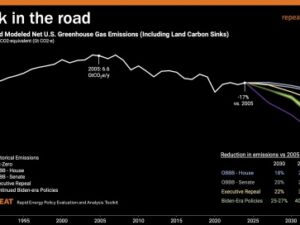CCL provides input to USDA about how to allocate IRA climate-smart agriculture funds
By Dana Nuccitelli
In last year’s passage of the Inflation Reduction Act (IRA), Congress included about $20 billion earmarked for natural climate solutions. The United States Department of Agriculture (USDA) is responsible for deciding how those funds should be allocated to meet the climate goals outlined in the text of the IRA, which include projects that will “reduce, capture, avoid, or sequester carbon dioxide” in American forests and farms.
Eagle-eyed CCL volunteer Matthew Mayers noticed that USDA was requesting public input regarding how to achieve those goals in practice, and CCL staff jumped on the opportunity to provide comments on this issue related to our healthy forests policy agenda.
Specifically, the IRA funds were directed towards four existing conservation programs: $8.45 billion for the environmental quality incentives program (EQIP), $3.25 billion for the conservation stewardship program (CSP), $1.4 billion for the agricultural conservation easement program (ACEP), and $4.95 billion for the regional conservation partnership program (RCPP). Currently, most of the grants from these programs go towards projects related to a wide variety of issues like habitat restoration, fencing, water conservation, and brush management – useful projects, but usually unrelated to climate change.
What does the science say?
To provide informed feedback to the USDA, CCL staff primarily referenced a 2018 study that estimated the potential of various natural climate solutions in the United States. The chart below summarizes the paper’s results, with forest-related solutions illustrated in shades of green and agriculture-related solutions in yellow, brown, and black.
Million metric tons (Mt) of potential carbon sequestration by natural climate solution category in the United States. Graphic by Dana Nuccitelli, adapted from Fargione et al. (2018), Science Advances.
As you can see, America’s biggest potential natural climate solutions are related to reforestation (planting trees on land that used to be forest) and forest management (harvesting practices in commercially logged forests). The biggest potential reforestation solutions – which are explored at the great Reforestation Hub website run by The Nature Conservancy and American Forests — are silvopasture (combining trees and grazing livestock on the same land) and urban trees.
There is tremendous potential for silvopasture in southeastern states like Tennessee, Alabama, Mississippi, Texas, Kentucky, Virginia, Georgia, North Carolina, Arkansas, and Florida, where large tracts of forest land were long ago converted to pasture, and where the shade from trees could provide much-needed cooling for livestock as extreme heat events become increasingly intense and frequent in this region.
“Forest management” describes a variety of practices such as letting trees grow older and larger before harvesting them for wood products, harvesting them in a way that minimizes the carbon released by the surrounding soils and trees, and mitigating wildfire risks.
Some farming practices such as cover cropping (planting crops to create soil cover between food crop seasons to improve soil quality, water retention, reduce erosion, etc.) and reduced-tillage agriculture might also have the potential to significantly increase the amount of carbon stored in the soil on American farms. But recent studies raise questions as to how effective these practices are at sequestering carbon individually, so further research is needed in these areas.
CCL’s recommendations
The EQIP, CSP, ACEP, and RCPP programs have funded some of these types of natural climate solutions projects in recent years. Cover cropping and reduced-tillage agriculture in particular have received a significant number of grants. Silvopasture projects and forest management plans have received only scattered funding.
As a result, CCL recommended that the USDA should give silvopasture and other agroforestry projects (for example, alley cropping, which combines rows of trees between rows of crops on farms) and forest management plans the highest priority for the IRA natural climate solutions funding. Cover cropping and reduced-tillage agriculture could be given a secondary prioritization to encourage further study into their carbon sequestration efficacy.
For further details, you can read CCL’s comment on the USDA website or in this PDF document. We hope that our recommendations are helpful to the USDA as CCL staff turns our attention to legislation coming out of Congress in 2023 related to healthy forests and the rest of CCL’s policy agenda.






